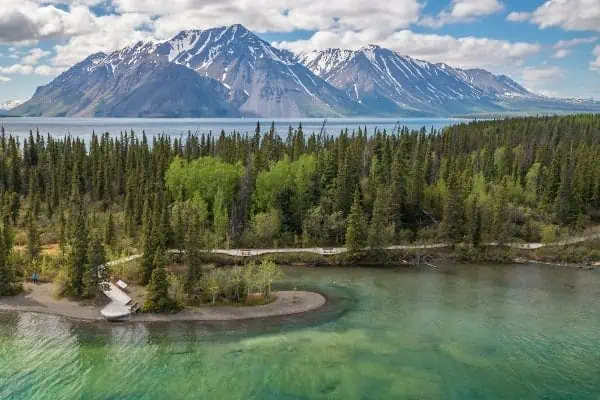Beautiful countryside, incredible food, kind and respectful people.
[one_half]
I had high hopes for Japan and my expectations were still blown out of the water. I don’t think I could be more in support of absolutely everyone making time to go explore this very special place.
I have always had a soft spot for Asia; its way of looking at life through a totally different lens. If you’ve been anywhere over there, I’m sure you understand why Asian tourists take pictures of absolutely everything while they are in North America and you’ve likely been guilty of doing the same over there.
Japan is easily the safest country I’ve ever wandered, so if you’re intrigued by the pull of the east, but hesitant about foreign travel in a non-English speaking destination, this is the country for you!
My travels began in Sapporo, went all the way to Ibusuki and back up to Tokyo, all by rail. The Japan Rail pass is a unique opportunity offered to tourists only. You do have to apply beforehand and receive your voucher by mail before entering the country. There are a handful of online agencies that offer passes. I would suggest looking at a few options, as prices can vary though the product is the same. Allow about two weeks for your pass to arrive in the mail. It should be redeemed at a Japan Rail office in Japan within three months of issue. Getting started is simple. First, choose where you want to travel. Will you be in one area of the country, or do you need to be covered for everywhere on the main islands? There are multiple options of area coverage depending on where you are destined. Next you have a choice of one, two, or three weeks. Finally, you decide between regular class, or green class, which is a first class option. The green cars are slightly nicer and roomier with more luggage storage options. The downfall is the price of the pass is higher and all seats are reserved, so you must always stop into a Japan Rail office to book a seat in person before every train ride. If the green car seats are already booked, you end up in regular class anyways. The regular class seats are more than good enough; they are comfortable, clean and there are luggage racks above the seats. I briefly considered the green car option, but was completely satisfied with the regular fare pass. You can pre-book seats at no extra cost on regular fare cars as well, but the option to just hop on unreserved cars gives you far more flexibility. I opted for a country-wide, three-week, regular fare ticket and was pleasantly surprised by the entire experience. The rail system itself is a little intimidating, but most signs and announcements are offered in English as well, for the benefit of tourists. I found an app by Navitime called Japan Travel that was extremely helpful for planning train times, navigating transfers (especially between Japan Rail and Shinkansen aka bullet trains) and figuring out which trains are covered by the pass. Pretty well all trains between towns are covered by Japan Rail, including Shinkansen, but you may find intercity transport (especially in Tokyo) is not covered. Anything that isn’t covered the app will tell you roughly how much it will cost.
[/one_half]
[one_half_last]
We love Japan but does Japan love us? The answer is a resounding, “kind of.”
The country seems to be somewhat split on foreigners and I can safely say it only takes about five minutes there to understand why. While tourism is growing and foreigners are warmly welcomed, we can also come as a nuisance and it’s important to understand the little ways in which we can be more respectful. From what I observed, they have built a culture around not irritating other people in public. You will hear announcements on public transportation asking you to put your phone on silent and not answer calls. It is considered rude to have loud conversations in public spaces, so be mindful of those around you and how you may be impeding upon them. Japan, as a whole, is very orderly, so word to the wise, if it exists then there is a line to it and you better queue up like everyone else. From trains to restaurants to exhibits, there will be orderly lines and it is a sin not to adhere. Be mindful around shrines and temples as there may be signs requesting no photographs. Noise should also be contained within the premises. There are few garbage cans around and somehow no litter anywhere, so please be like the locals and carry out whatever you carry in. The easiest place to find garbage disposal is at convenience stores, though it’s customary to purchase something from the store to use their facilities, including garbage receptacles. These little efforts to be respectful to locals will go a long way to bettering our reputation while visiting.
If you are linguistically gifted and interested in learning Japanese, even a few words will greatly please the locals. Most days I feel like I barely have a handle on English so I tend to shy away from butchering other languages, but I can tell you that any effort is sincerely appreciated and when you make mistakes you’re more likely to amuse them than you are to offend.
The food is to die for. I can’t say that I had a single bad meal. The gyoza are steamed to perfection, ramen is piping hot, the sushi is so fresh it may have been swimming in the tank beside you seconds before, yakitori is an experience more than a meal. Even the 7-Eleven food is great. The foodies will riot, but I swear it’s actually good and convenient. When you need a snack, why eat chips when you could have chicken and rice and veggies? Oh, and there are bakeries everywhere which I definitely didn’t not binge on. If you are adventurous in the realm of food, both horse and chicken sashimi are available to try. Personally, I stuck to the fresh-out-of-the-oven doughnuts and surprisingly good vending machine coffees.
Check out the follow up article for must-sees.
[/one_half_last]




